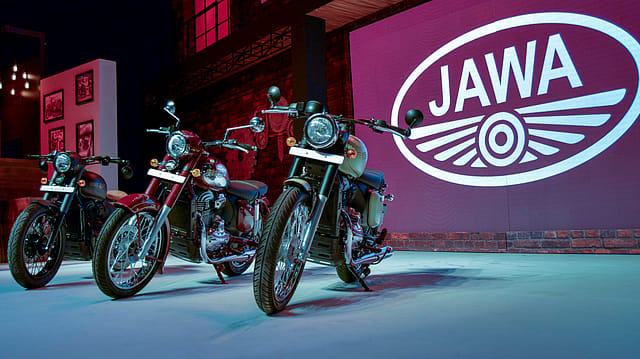The nostalgia economy
ADVERTISEMENT

What do Jawa motorcycles, Paper Boat soft drinks, Saregama Carvaan radio sets, and Neelesh Misra’s Yaadon Ka Idiot Box cult hit show have in common? They are all part of India’s thriving nostalgia economy.
Jawa, an iconic Czechoslovakian brand that first came to India in the 1950s, has been re-launched by a Mahindra Group company earlier this week—no doubt encouraged by the success of another retro brand, Royal Enfield, which sells 800,000 motorcycles a year and has a market capitalisation higher than that of Harley-Davidson.
But the appeal of such products is not just in the products themselves but also in what they mean for generations which remember the age of analogue and misses its tactility in the digital era.
These are people who grew up listening to the radio and love the feel of turning on a physical radio to listen to around 5,000 evergreen songs stored in the Saregama Carvaan (even though all those songs could be heard on YouTube for free) that costs around Rs 6,000 and sells more than 50,000 units a month. It has turned around the fortunes of Saregama (erstwhile HMV) which until a couple of years ago had been left for dead. Year-on-year profits have trebled and its share price is up more than 23%. Saregama now sells four iterations of the product—Hindi, Bengali, Tamil and Marathi. The Bengali version has a dedicated button called ‘Tagore’.
Why do people choose to pay money for something they can stream and listen for free on their phone? For the same reason that thousands buy Paper Boat drinks like jal jeera and aam panna which they could easily make at home—convenience and a powerful longing, and a sense of loss, for an age gone by. For the record, revenues of Paper Boat for FY18 rose by 71% and their ads feature every trope of nostalgia that they can find—from reminding us of the taste of pickles made by our grandmothers to paper boats we set afloat in puddles.
January 2026
Netflix, which has been in India for a decade, has successfully struck a balance between high-class premium content and pricing that attracts a range of customers. Find out how the U.S. streaming giant evolved in India, plus an exclusive interview with CEO Ted Sarandos. Also read about the Best Investments for 2026, and how rising growth and easing inflation will come in handy for finance minister Nirmala Sitharaman as she prepares Budget 2026.
As the historian Yuval Noah Harari often points out in his work, the age of technology which now affects our very bodies, promising to transform everything from our lifespan to our memories, has a parallel disquieting impact on our sense of control. A leaked password can beggar us today, and a single tweet destroy a career built over decades. This has made nostalgia—for a time when we ostensibly had greater control of our lives—seem ever more romantic. It is an economy, and a marketing ploy, that builds on the idea of an age of greater innocence, free time, and an enveloping sense of virtuous love that many feel they can remember fondly.
This demand for nostalgia and simplicity has fuelled successful products everywhere—note the almost logo-free Allbirds, merino wool runners that have become Silicon Valley uniform, or sales of vinyl records surpassing digital sales in Britain in the last couple of years or the grand revival of retro sportswear (this year’s hottest trend is the ‘dad sneaker’ or comfortable but not very stylish sneakers, the kind that one’s father might have owned a couple of decades ago).
This is theme is a favourite of Misra’s who revolutionised talk radio in India by introducing a category of storytelling infused with music of a bygone era full of memories that everyone shared. A favourite Misra device is to use memories of men and women who have moved out of small-town India in search of their dreams and fuelled by the opportunities that economic liberalisation unfurled—and their desire to reconnect with that world they left behind. Misra propelled the popularity of his radio show to launch India’s first newspaper focussed on villages called Gaon Connection, aiming among other things, to reconnect many Indians who have left villages to go on to work in cities, with their hometowns and bring quality journalism about villages for readers in rural areas too.
This nostalgic journey has invigorated a rediscovery of age-old indigenous grains (as evidenced by the success of Fortune India’s 40 under 40 company Original Indian Table which was one of the pioneers in bringing back black rice to Indian tables, including in some of the poshest restaurants). It has triggered the revival of the QWERTY keypad phones. It fuelled a successful online funding and creation of a new, minimalist phone called the Light Phone.
And in a staggering display of the purchasing power of nostalgia, government-run Khadi and Village Industries Commission is now raking in nearly $8 billion in annual sales (Rs 50,000 crore) a year. Who said nostalgia is austere?
